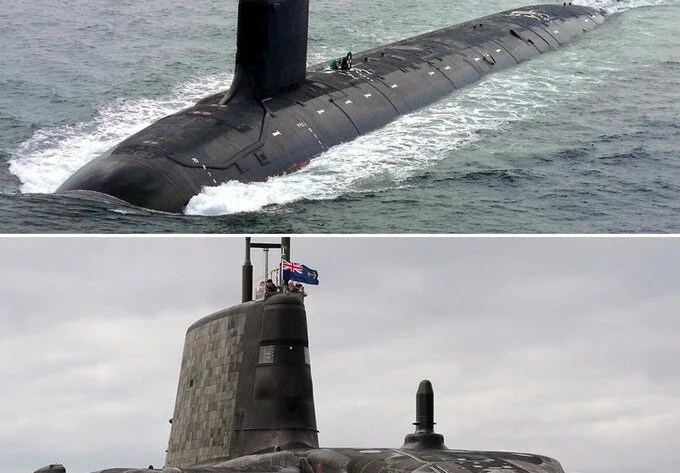While the world watched with anxiety as Australia moved forward with its ambitious nuclear submarine deal, analysts all around the world held their reservations.
Why Nuclear-Powered Submarines?
Nuclear-powered submarines are essential due to their stealth, speed and unlimited endurance, adding to a nation’s maritime security and influence.
Not only are these submarines faster in speed and harder to detect than conventionally powered fleets. In addition, nuclear submarines are advantageous for surveillance and reconnaissance missions. They can stay submerged for months, shoot missiles longer distances, and carry more.

Picture Credits@ CSBA- Gateway to the Indo-Pacific: Australian Defense Strategy and the Future of the Australia-U.S. Alliance
Thus, Australia possessing a fleet of nuclear subs and having them stationed in the Indo-Pacific region is critical to U.S. influence and intelligence.
Analysts and international security experts worldwide have expressed diverse views about AUKUS as a security agreement and its future role in the region.
Want to know more about AUKUS, Read it here!
However, one thing is common when it comes to the nuclear submarine deal. Even the supporters of the deal have raised concerns stating that the hurdles are formidable.
While the sceptics say, they could be insurmountable. To sum up, various logic and reasons have been provided.

Picture Credits@ U.S. Navy photo by Mass Communication Specialist 2nd Class Kaila V. Peters
AUSTRALIA and its concerns
Firstly, Australian analysts state that Australians’ technological know-how and expertise in nuclear and modern weapons like submarines are pretty limited.
To undertake this deal, Australians must make significant advances. Nuclear technology in itself is a complex matter, and Australia has never had a nuclear program before.
In addition to this, Australia operates only one small nuclear reactor. Its only university program dedicated to nuclear engineering produces about five graduates every year, said Edward Obbard, the program leader at the University of New South Wales in Sydney.

Picture Credirs@ Soheb Zaidi
Furthermore, he said that Australia would need thousands of more people with nuclear training and experience to realise its grand vision of building nuclear submarines.
Regarding its industrial capacity, Australia has a limited industrial base for building submarines, with its last submarine built some 20 years ago. Moreover, Its past two plans to build submarines fell apart before any construction.
Lastly, the U.S. and U.K. will face hurdles while undertaking the production of submarines. They have to provide high-precision parts for Australia. They also have to divert expert labour to Australia.
According to Prime Minister Morrison, the submarines will be assembled in Australia and made with Australian steel. Although Australia will provide construction labour, they will be heavily dependent on Washington and London for nuclear and submarine experts.

Picture Credits@ Christopher Burns
The United States and its capacity to fulfil promises.
Our readers have to understand here that constructing submarines with nuclear technology is highly precise and technologically advanced.
As far as the United States is concerned, it is already facing hurdles in expanding its submarine program to construct its new fleet.
Analysts suggest that the United States can help Australia to build something like its Virginia class attack submarine.

Picture Credits@(U.S. Navy Photo by John Narewski)
These submarines are nuclear-powered, advanced in stealth and speed, and do not carry nuclear missiles, aligning with Australia’s approach. But the problem lies in their production and timely completion.
To understand better, let us look at some facts. First, two American shipyards make nuclear submarines. Currently, each shipyard can complete one Virginia class submarine in a year.
These shipyards are already ramping up to build Columbia class submarines, 21,000-ton vessels that can carry nuclear missiles as a roving deterrent for the U.S. Navy and is a top priority for the administration.
Also, their suppliers are under pressure to keep up with orders for the U.S. Navy. This, combined with orders from Australia for supplies and experts, can land both sides into trouble and jeopardise the deal.

Picture Credits@ LA Times
Even a report to the Senate Armed Services Committee warned that the “nuclear shipbuilding industrial base continues to struggle to support the increased demand” from U.S. orders.
Britain as a last resort for Australia?
Supporters of the deal have prompted that Australia should choose Britain’s Astute-class submarine. The Astute class submarine of the British Royal Navy is less expensive and uses a smaller crew than American subs.
However, Britain has been phasing out the PWR2 reactor that powers the Astute class subs. Furthermore, in an audit report published in 2018, British officials have already agreed that they would not be going forward with the existing model. Thus, the Astute class subs do not possess a design that can fit the next-generation reactor.

Picture Credits@ The Naval News
This design problem could make it difficult to restart building submarines for Australia. Further, Australia might not invest in outdated models and designs which are not even serviceable.
To add to this, the British Astute-class subs model is still on the drawing board and not yet finalised, with the government claiming that it would spend 3 years on design.
Similarly, just like the United States, Britain’s submarine maker, BAE Systems, is also busy building Dreadnought submarines to carry the country’s nuclear deterrent. It is not news that Britain’s submarines have often come from the production line, often behind schedule.

Picture Credits@ Annie Spratt
Therefore, the U.K. cannot afford to delay its project and divert its efforts to Australia in an already delayed scheme and priority tasks of completing the Dreadnaught project.
Implications for India
India is envisioning AUKUS and the nuclear submarine deal as an opportunity to complement its maritime vigilance and security capacity.
Australia being one of the members of QUAD, if successfully executes the nuclear program, will be an excellent addition to the nuclear subs club.
Since India’s vision of the Indo-Pacific rests more on the Indian Ocean and less on the Pacific Ocean, comprising areas of the eastern African coast and the coastal countries of Middle East Asia.
At the same time, U.S. and Australia are more focused on the Pacific Ocean part, where recent Chinese assertiveness has raised concerns for the United States, Australia, and Japan.

Picture Credits@ Official Twitter Account Scott Morrison
Furthermore, with the formation of AUKUS, Quad has been cleared of its name as an anti-China “alliance of democracies”.
Since maintaining strategic autonomy and sticking to its principle of non-alignment with any nation has been one of its core policies.
Therefore, India is worried about a rising China but faces the reality that it cannot directly counter China to maintain its security and overlook China’s number-one trading partner.
For India, this means that the Quad can maintain its comprehensive agenda and its cooperation in broad areas. This meshes well with India’s outlook. It would like China contained but does not want to be the one containing China.

Picture Credits@ (eng.chinamil.com.cn/Photo by Li Wei)
Conclusion
To sum up, there are practical and logical hurdles that Australia might face during the next coming years when the deal will be finally taking its shape. Further complications can have serious consequences not only on the maritime security of Australia but also on the region.
Therefore, fulfilling their commitment to Australia by U.K. and USA should be their top priority since time is of the essence here. On the Australian side, they have to start beefing up their technological and nuclear capacities to support the deal further and develop their industry.
Till then, they should continue exploring the opportunities of procuring other conventional submarines in the light of their ageing submarine fleet.
By- Yash Arya






[…] Read more about AUKUS here and the nuclear submarine deal here. […]
[…] Read about Australia and its ambitions for nuclear submarines here! […]